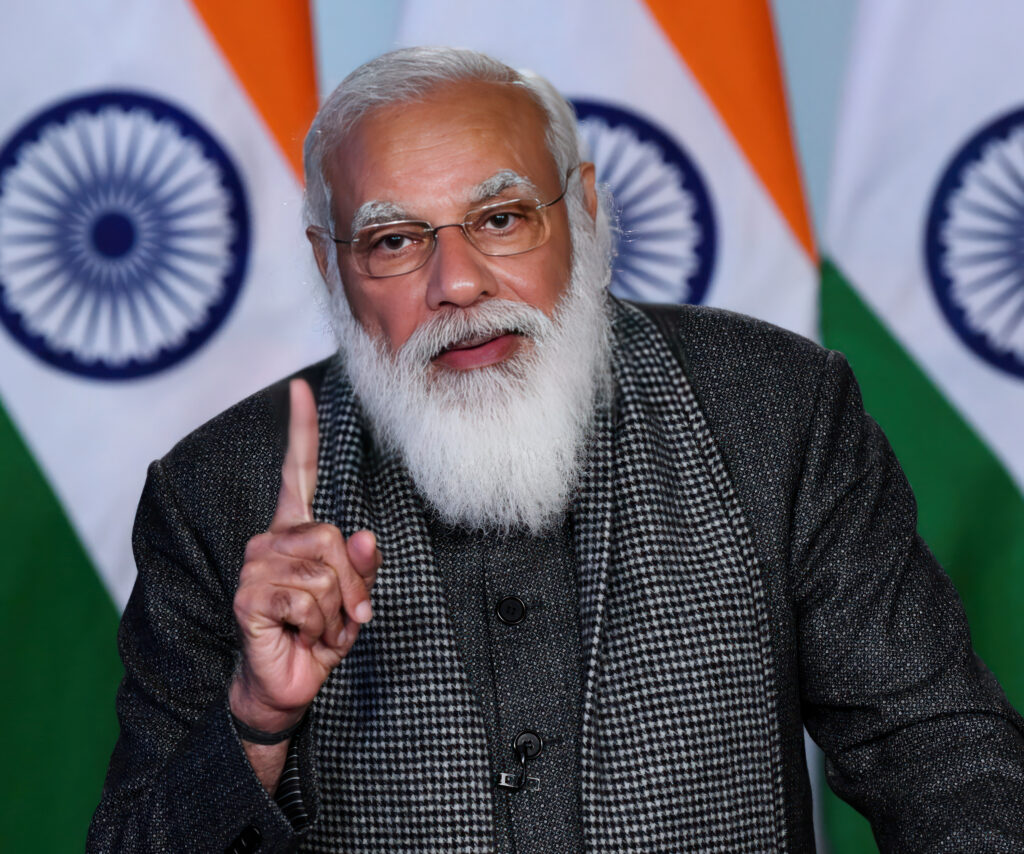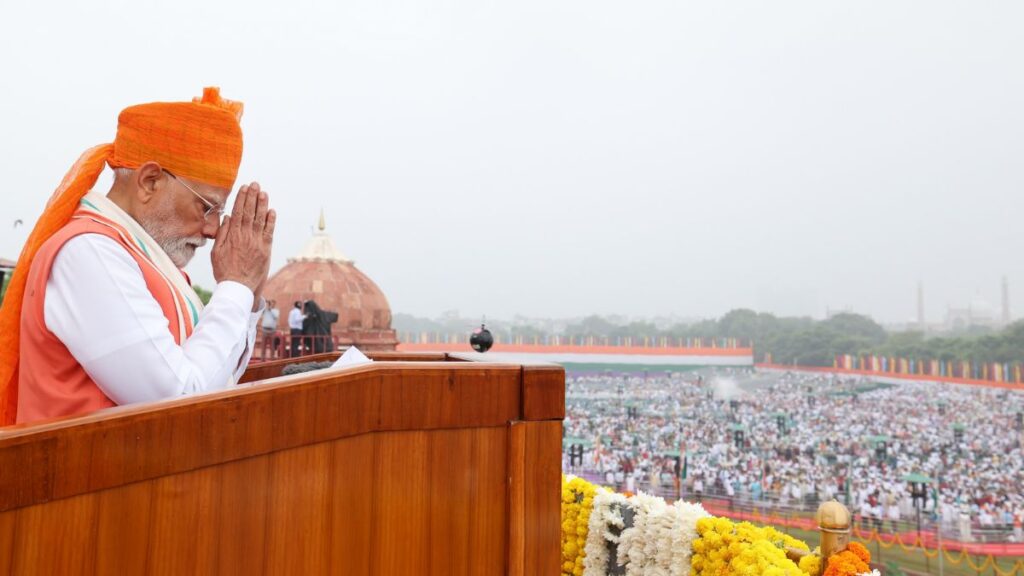India’s 79th Independence Day celebrations were marked by grandeur, patriotism, and a visionary roadmap shared by Prime Minister Narendra Modi from the historic Red Fort. His speech not only paid tribute to the sacrifices of freedom fighters but also outlined the nation’s ambitious journey toward “Viksit Bharat 2047” — a fully developed India by the time the country celebrates its 100th year of independence.
The address touched on economic reforms, social empowerment, digital transformation, green growth, and India’s rising stature on the global stage. Here’s a detailed breakdown of the key highlights from PM Modi’s 79th Independence Day speech.
1. Viksit Bharat 2047: The Vision Ahead
The Prime Minister reiterated his dream of transforming India into a developed nation by 2047. The “Viksit Bharat” mission is built on four major pillars:
- Strong economy
- World-class infrastructure
- Innovation and digital empowerment
- Social equity and inclusive growth
Modi emphasized that India has already positioned itself as one of the fastest-growing major economies and will continue to harness its demographic dividend, entrepreneurial spirit, and technological advancements.
2. Economic Growth and Reforms
Highlighting India’s economic resilience, PM Modi pointed to milestones such as:
- India emerging as the fifth-largest economy in the world.
- Record-high FDI inflows in the last decade.
- Rapid infrastructure development through highways, airports, and railways.
He also stressed that reforms in taxation, banking, and ease of doing business have laid the foundation for India’s journey to becoming a $5 trillion economy and beyond.
The government’s focus will now shift toward creating a globally competitive manufacturing ecosystem, strengthening exports, and building self-reliance in critical sectors such as semiconductors, defense, and renewable energy.
3. Digital India and Technology Leadership

Digital empowerment was a central theme of the speech. Modi hailed India’s Digital Public Infrastructure (DPI), including UPI, Aadhaar, and CoWIN, as models being adopted worldwide.
Key initiatives highlighted:
- Expansion of 5G networks and investment in 6G research.
- Boosting AI, quantum computing, and cybersecurity.
- Establishing India as the global hub for start-ups and innovation.
He noted that rural India is now becoming equally digital-savvy, with digital payments and online services penetrating villages.
4. Green Growth and Sustainability
A strong emphasis was placed on India’s commitment to combating climate change. Modi reiterated the Panchamrit goals announced earlier at COP26, particularly India’s target of achieving net-zero emissions by 2070.
Some initiatives he mentioned include:
- National Hydrogen Mission to position India as a green hydrogen leader.
- Expansion of solar and wind energy capacity.
- Promotion of electric mobility and biofuels.
- Large-scale afforestation and water conservation programs.
By linking economic growth with ecological sustainability, PM Modi stressed that India’s development would remain environment-friendly and future-ready.
5. Women-Led Development
In line with the government’s focus on Nari Shakti (women power), the Prime Minister praised women’s achievements in space, defense, entrepreneurship, and sports.
Key initiatives emphasized:
- Continued promotion of women entrepreneurs through schemes like Mudra Yojana.
- Reservations for women in Parliament and state assemblies.
- Greater inclusion of women in STEM education and digital literacy.
Modi underlined that women will play a decisive role in shaping Viksit Bharat 2047, turning empowerment into nation-building.
6. Youth Power and Education
PM Modi called the youth the “architects of Viksit Bharat.” With a demographic advantage, India’s young population is expected to drive innovation and global competitiveness.
Educational reforms under NEP 2020 (National Education Policy) were highlighted:
- Emphasis on skill development and vocational training.
- Integration of AI, coding, and emerging technologies into curricula.
- Support for start-up incubation at universities.
He urged young Indians to become job creators rather than job seekers, embracing entrepreneurship and innovation.
7. Global Leadership and India’s Rising Influence

India’s role as a trusted voice in global affairs was a major theme. From hosting the G20 presidency to leading conversations on climate change, digital governance, and global health, Modi asserted that India is no longer just a participant but a shaper of global narratives.
He emphasized India’s balanced and independent foreign policy, highlighting partnerships across the Global South and with major powers alike.
8. Welfare and Social Justice
PM Modi reaffirmed his government’s commitment to inclusive development (Sabka Saath, Sabka Vikas). Key welfare measures highlighted:
- Affordable housing under PM Awas Yojana.
- Free healthcare coverage through Ayushman Bharat.
- Subsidized ration under PM Garib Kalyan Anna Yojana.
- Expansion of clean drinking water supply through Jal Jeevan Mission.
The vision, he stressed, is to ensure that no Indian is left behind in the journey to 2047.
9. Defense and National Security
The Prime Minister highlighted strides in India’s defense modernization, including indigenous fighter jets, warships, and missile systems under the Atmanirbhar Bharat mission.
He reiterated India’s commitment to protecting its sovereignty and territorial integrity while also contributing to global peacekeeping missions.
10. Call to Citizens: Jan Bhagidari for 2047
Concluding his speech, PM Modi reminded citizens that building a Viksit Bharat is not just the government’s responsibility but a national mission requiring collective effort.
He urged every Indian to contribute by:
- Paying taxes honestly.
- Conserving resources.
- Promoting “Made in India” products.
- Supporting innovation and entrepreneurship.
His closing note was filled with optimism, envisioning India’s 100th Independence Day in 2047 as a moment when the world will celebrate the rise of a self-reliant, prosperous, and compassionate India.
Conclusion
PM Modi’s 79th Independence Day speech was more than a ceremonial address — it was a strategic blueprint for India’s future. By setting clear priorities in economic growth, digital innovation, green energy, women empowerment, youth leadership, and global influence, the speech outlined a roadmap for a developed India by 2047.
The theme of Viksit Bharat resonated throughout, calling for unity, determination, and collective participation. As India marches ahead, the dream of transforming into a global leader and developed nation seems not only achievable but inevitable, provided the momentum continues.

